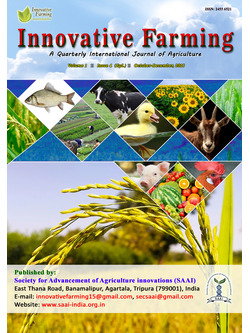
Botanicals in Eco-Friendly Post Harvest Disease Management
Parthasarathy Seethapathy*
Dept. of Plant Pathology, Center for Plant Protection Studies, Tamil Nadu Agricultural University, Coimbatore - 641003, Tamil Nadu, India
Rajalakshmi Jayaraman
Dept. of Plant Pathology, Center for Plant Protection Studies, Tamil Nadu Agricultural University, Coimbatore - 641003, Tamil Nadu, India
Narayanan Palani
Dept. of Plant Pathology, Center for Plant Protection Studies, Tamil Nadu Agricultural University, Coimbatore - 641003, Tamil Nadu, India
Prabakar Kuppusami
PGP College of Agricultural Science, Namakkal - 637405, Tamil Nadu, India
DOI: NIL
Keywords: Botanicals, Ecofriendly, Fungicides, Post harvest diseases
Abstract
Synthetic fungicides are widely used in conventional agriculture to control plant diseases. Post harvest pathogens which causes serious losses annually in Indian fruits and vegetables. The disease is currently managed with synthetic fungicides under post harvest condition by fungicidal dipping. Applied chemical pesticides are one of the effective and fast means for reducing the loss of post-harvest diseases. Nevertheless, the excessive use of these chemicals for controlling fungi in fruit has been counterproductive, causing damage to the environment and humans, with increased demands to reduce the use of these chemicals that accumulate in fruits and vegetables.
Downloads
not found
Reference
Cowan, M.M. (1999). Plant products as antimicrobial agents. Clinical Microbiology Reviews, 12, 564–582.
Das, K., Tiwari, R.K.S., & Shrivastava, D.K. (2010). Techniques for evaluation of medicinal plant products as antimicrobial agent: Current methods and future trends. Journal of Medicinal Plants Research, 4, 104–111.
Dorman, H.J.D., & Deans, S.G. (2000). Antimicrobial agents from plants: Antibacterial activity of plant volatile oils. Journal of Applied Microbiology, 88, 308–316.
Mishra, A.K., Dwivedi, S.K., & Kishore, N. (1989). Antifungal activity of some essential oils. National Academy Science Letters, 12, 335–336.
